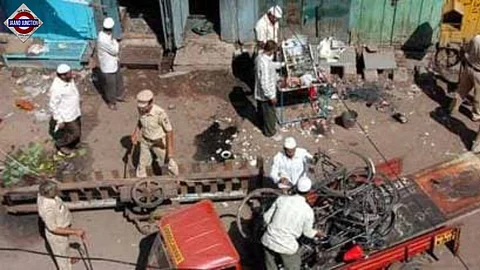

Seventeen years after a devastating explosion tore through the communally sensitive town of Malegaon in Maharashtra, a special court of the National Investigation Agency (NIA) in Mumbai is set to deliver its verdict on Thursday.
This judgment represents a pivotal moment in one of India’s most lengthy and politically contentious terror cases, marked by numerous twists, including changes in investigative bodies, allegations of fabricated evidence, and witnesses turning hostile.
On September 29, 2008, an explosive device attached to a motorcycle detonated near a mosque in Malegaon, resulting in the deaths of six people and injuring over 100 others. The timing of the blast was particularly sensitive, occurring on the eve of the Hindu festival of Navratri and during the holy month of Ramzan, sparking immediate fears of communal unrest.
The Maharashtra Anti-Terrorism Squad (ATS) initially led the investigation, quickly tracing the motorcycle’s ownership and making several arrests, alleging the involvement of Hindu right-wing extremist groups.
Among those who stood trial are former BJP MP Sadhvi Pragya Singh Thakur and Army officer Lieutenant Colonel Prasad Purohit. Other accused include Major (retired) Ramesh Upadhyay, Ajay Rahirkar, Sudhakar Dwivedi, Sudhakar Chaturvedi, and Sameer Kulkarni. The ATS, in its initial probe, invoked the stringent Maharashtra Control of Organised Crime Act (MCOCA), accusing the group linked to Abhinav Bharat of conspiring to establish a “Hindu Rashtra" and incite communal tensions.
However, the case took a significant turn when the National Investigation Agency (NIA) took over the probe in 2011. In a 2016 supplementary chargesheet, the NIA dropped MCOCA charges, citing questionable application of the law by the ATS and alleging procedural irregularities and coercive tactics during the initial investigation.
Although the NIA exonerated some accused, the special court, on December 27, 2017, decided that Sadhvi Pragya and six others would face trial under various sections of the Unlawful Activities (Prevention) Act (UAPA) and the Indian Penal Code (IPC), including criminal conspiracy, murder, and promoting enmity between religious groups.
The trial began formally in 2018. Over the years, the prosecution presented 323 witnesses, but faced significant challenges as 37 of them turned hostile, weakening crucial aspects of the case.
Both prosecution and defence presented their final arguments, with the NIA advocating for severe punishment for the accused, arguing that the blast was intended to terrorise the Muslim community and disrupt internal security. Conversely, the accused have maintained their innocence, with Pragya Thakur alleging evidence manipulation and Purohit claiming a lack of material evidence linking him to the offence and alleging a flawed investigation.
The verdict on July 31 is highly anticipated for several reasons.
Legal Implications: The judgment will decide the fate of the seven accused, who could face severe punishment, including life imprisonment under UAPA, or acquittal if the prosecution fails to prove the charges beyond a reasonable doubt. Regardless of the outcome, appeals to higher courts are likely, indicating that the legal saga may not end here.
Political Ramifications: Given Sadhvi Pragya Thakur’s status, the verdict carries significant political weight. A conviction could impact her political career and the BJP, while an acquittal would likely be seen as vindication by her supporters. The case has long been politicised, with both sides accusing each other of bias and manipulation.
Credibility of Investigating Agencies: The verdict will also reflect on the investigations conducted by both the ATS and the NIA, especially given the NIA’s claims of flaws in the initial ATS probe and the high number of hostile witnesses. It will test the Indian judiciary’s ability to deliver justice in complex, politically sensitive cases that have spanned nearly two decades.
